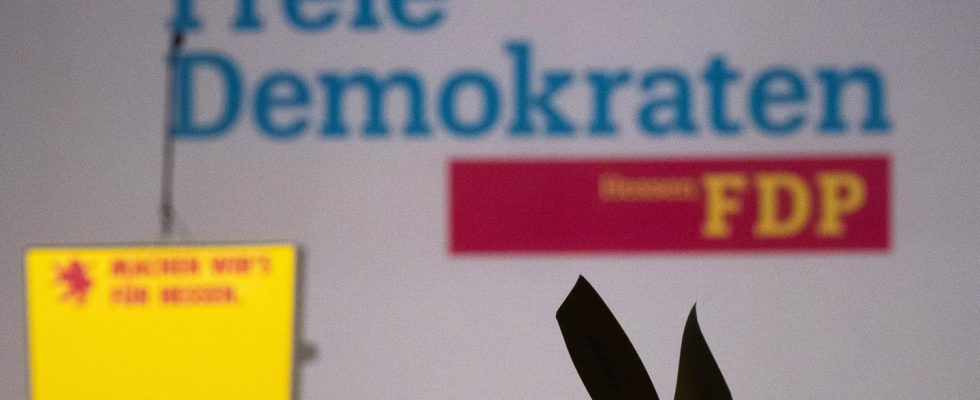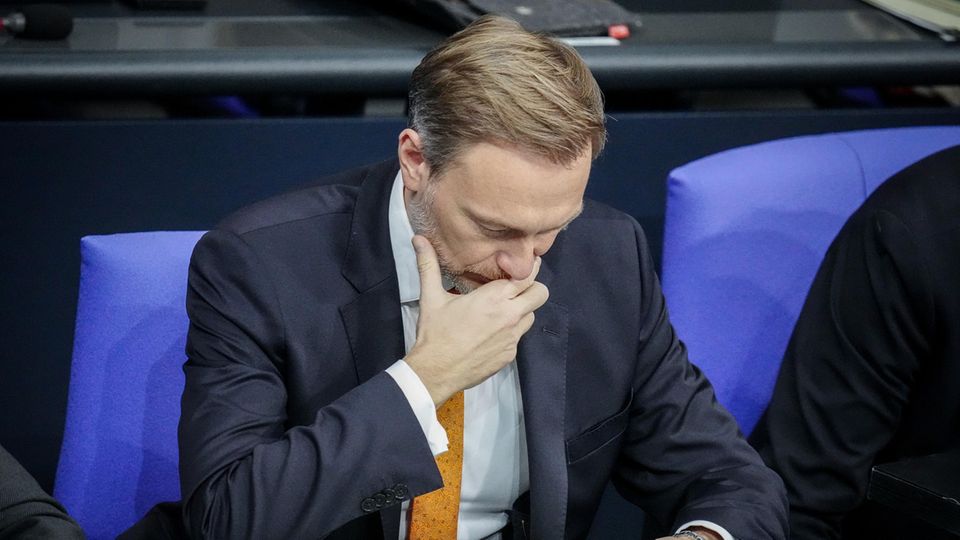Member survey
A wafer-thin majority of FDP members want to stay in the traffic lights
A delegate votes during the state party conference and the state members’ meeting of the FDP Hesse in the town hall
© Sebastian Gollnow / DPA
Stay in the traffic lights or go out? The members of the FDP were allowed to decide on this until exactly 1 p.m. on New Year’s Day. There was a close result – which, however, is not binding for the party leadership anyway.
A sigh of relief in the FDP leadership: In the member survey, a majority voted to remain in the coalition with the SPD and the Greens. 52.24 percent of voters advocated continuing government work, 47.76 percent wanted to end the coalition, as the German Press Agency learned from party circles on Monday. However, only 26,058 of the approximately 72,100 FDP members took part in the survey – just a little more than one in three.
The member vote has no practical consequences. Because the statutes say: “The party’s organs are not bound in their decision-making to the results of the member survey.” However, the result is considered an important mood picture. If there had been a majority in favor of leaving the traffic lights, this would have fueled the discussion within the party and put the party leadership under pressure.
This would most likely have meant new turbulence for the traffic light coalition. The relatively low interest of the FDP base in the question asked – participation in the survey of around 36 percent – and the result now also strengthen the party chairman Christian Lindner.
FDP members had requested a vote
The FDP federal executive board started the survey on December 18th after 598 members requested it. Members were able to participate online for two weeks. The question was: “Should the FDP end the coalition with the SPD and the Greens as part of the federal government?” The answer could be “yes” or “no”.
According to the statutes of the FDP, a survey must be carried out if 500 members request it. This can be done through secret postal voting, decentralized in-person voting, online voting or a combination of the three methods. In this case, the party leadership decided on the online procedure. Only members who were listed with an email address in the member directory were able to take part.
The initiative for the member vote followed an open letter from 26 state and local politicians from the FDP. After the poor election results in Hesse and Bavaria, they demanded that the FDP should reconsider its coalition partners. In Bavaria, the FDP missed entry into the state parliament last October. In Hesse it only barely made it over the five percent hurdle.
Election year 2024 promises to be difficult for the FDP
The FDP had previously suffered failures in five other state elections since joining the traffic light coalition. In elections in Berlin, Lower Saxony and Saarland, it also failed to meet the five percent hurdle. In Schleswig-Holstein and North Rhine-Westphalia she remained in the state parliament, but was kicked out of the government. Participation in the federal traffic light coalition was controversial in parts of the party from the start.
The 2024 election year also promises to be difficult for the FDP. The polls for the three state elections in September in Saxony, Thuringia and Brandenburg put the Liberals at three to five percent. However, they are already several weeks old. In Saxony and Brandenburg, the FDP does not yet sit in the state parliament. There are no national polls yet for the European elections in June – in 2019, the FDP received an underwhelming 5.4 percent.
FDP leader Lindner was extremely calm about the members’ vote. It doesn’t stress him out, he said. “Because it is an opportunity to make it clear that the FDP is helping to shape the direction of the government.”



